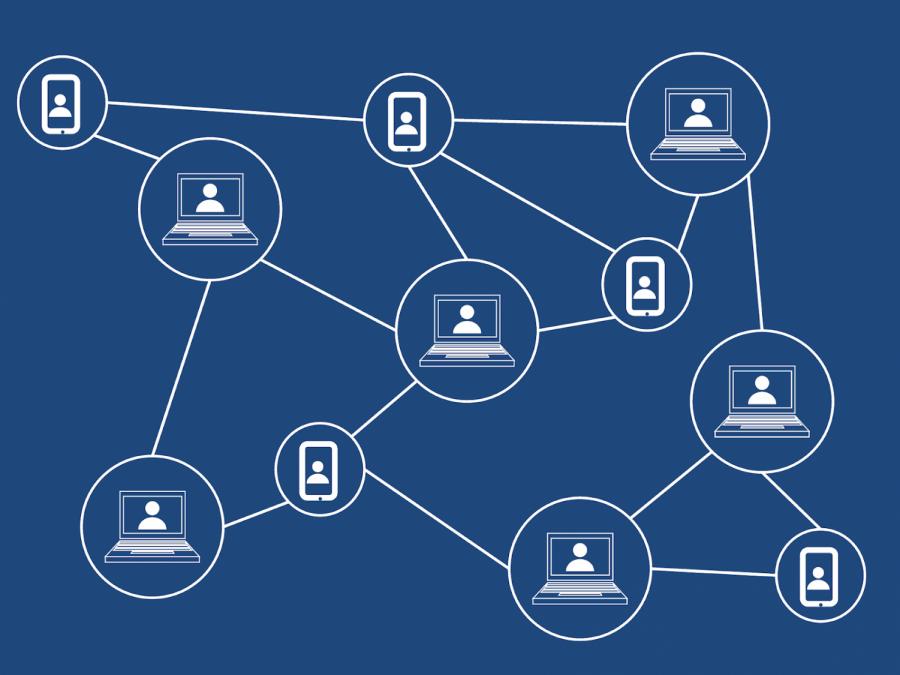Bitcoin for Your Thoughts: Blockchain Election Technology
October 19, 2020
From celebrities in television ads to Chancellor Diermeier in Instagram videos, people everywhere are constantly reminding us to vote in this year’s election. They have a good reason to do so: voter turnout in the United States has been dismal.
In the 2016 election, approximately four out of every ten eligible voters failed to cast a ballot. This placed the United States 26th out of 32 countries in the OECD, a group of highly developed democratic nations. According to a Pew Research poll, the most popular reason given by non-voters for their lack of participation is disliking the candidates and campaigns, but this only represents a quarter of all respondents. Others cite conflicting schedules, illnesses, disabilities, and inconvenient polling locations, among others, as reasons to stay home on Election Day.
Many people believe this long list of voting-centered problems could potentially be solved with a new form of election technology: blockchain.
Blockchain is relatively new and very complex technology. At its most basic level, it represents the linkage of “blocks” of digital information through a “chain” of a public database. This technology is most commonly used today in the form of cryptocurrencies, such as Bitcoin and Ethereum, but it has also found applications in supply chain management and medical record storage, for example.
Blockchain advocates claim that elections can be added to the list of systems improved by this technology. In such an arrangement, each vote essentially would become a new “block” recorded on the unchangeable, decentralized “chain.” Power would shift away from central authorities and election agencies; new votes would be validated by multiple computers, each keeping its own copy of the running election results.
Proponents of blockchain voting argue it will provide widespread benefits. They suggest the technology’s trademark characteristics of “transparency, immutability, and accountability” would translate into major improvements in election security. Voting in a blockchain election would require a variety of identity data, such as standard IDs and biometric data like fingerprints, which could significantly reduce voter fraud. Such a system would also allow voters to verify their own ballots to ensure they were recorded properly.
Furthermore, according to supporters, blockchain would streamline elections, making voting faster and more convenient for the average busy American. People could also theoretically vote on their own phones, which would make the act of voting easier and more accessible for Americans with disabilities and people living in areas far from polling locations, even overseas.
However, many others hesitate to consider such a switch. Security experts believe the decentralization of authority is far too dangerous, even with excellent cyber security measures in place. Voting servers and ballot-handling computers present easy, high-reward targets for hackers, leaving the entire election record vulnerable. A single piece of malware on a voter’s device can wreak havoc on the entire election.
The digital divide also presents concerns in the eyes of lawmakers. Americans with incomes below $30,000 are statistically less likely to own smartphones, tablets, or traditional computers. Gaps also exist in digital literacy, which goes hand in hand with access, on top of the fact the average American adult faces some level of struggle using technology. If elections are digitized, access and guidance would need to be provided to many voters to avoid disenfranchisement.
Critics argue that participation in such a system could also be inhibited by its identification requirements because over 21 million Americans lack a government-issued photo ID. Obtaining identification can be an extremely costly and tedious process and inaccess is disproportionately concentrated among minority communities. The Government Accountability Office found that strict voter ID laws in the current system reduce turnout by 2% to 3%. In a blockchain election, requirements would be even more stringent, which could further prevent people from casting their ballots.
Another major obstacle is the complexity of the technology itself. While filling in a bubble on a ballot is simple and trusted, blockchain puzzles most people until they take a generally-large amount of time to understand it; even then, certain aspects are constantly changing and difficult to continuously grasp. Because of this, lawmakers have been slow to trust the technology, leading to a lack of usage in the past. Moreover, when over half of Americans already do not trust elections, they may struggle to adapt to a complicated, untested system.
Where they have been used, blockchain voting systems have seen questionable results. Researchers from the Massachusetts Institute of Technology analyzed one of today’s most well-known current blockchain voting apps, “Voatz.” This system, used by some voters in West Virginia’s 2018 midterm elections, was found to have major security vulnerabilities, allowing votes to be changed or exposed. Due to these issues, in addition to a possible lack of privacy related to app outsourcing, they concluded that any plans to use the app in future should be abandoned immediately.
In other countries, blockchain elections have been somewhat more successful, but still with issues. Moscow used this technology in their 2019 city council election and saw their voter turnout rate increase by 17%. Nine out of ten registered voters ultimately casted a ballot. However, members of Russia’s Libertarian Party claim the system malfunctioned and cost an independent candidate the win, ultimately making the election contentious.
While no voting system is ever perfect, blockchain technology represents one relatively untested potential solution to some long-running election problems in the United States. Lawmakers should consider its benefits and drawbacks during discussions of election reforms to promote the best voting system possible.
Image Credit: Tumisu (no license required)








